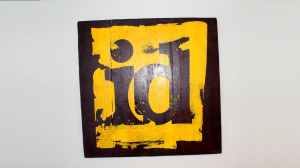
About ten years ago it seemed as though Image Comics possessed some special alchemy for delivering stellar new concepts in perfectly packaged #1 issues. Series like Saga, East of West, and Prophet all delivered a radically imaginative sci-fi landscape, distinctive art styles, and enthralling collections of characters, action, and worldbuilding. That alchemy may have been as much of a result of luck as anything else, but Protector #1 delivers the sort of experience that readers came to expect from each Image Comics’ debut in 2012. The magic is very real in this issue.
Videos by ComicBook.com
The story takes place in the distant future of our planet. While the setting is disastrous with climate change having long since seared North America into a desert, it seems inaccurate to call this a dystopia. Instead, time has warped the landscape and its people to such a degree that this Earth is barely recognizable and its commentary is more likely to be delivered as philosophy than specific commentary. Readers are introduced to this strange, new world through the dual narratives of two characters: Mari, a young woman escaping from her enslavers before discovering powerful, ancient technology and First Knife, warrior and leader of a tribe threatened by this discovery. Together, these two figures offer an immersive introduction to the culture, technology, and traditions that compose a world where scarcity dominates life.

It’s the style in which those stories are told that make Protector #1 an enthralling reading experience. Mari’s escape from slavers begins in the first few pages as her captors realize she is gone. Dialogue is deployed naturally, offering a touch of exposition, but once the chase is on Artyom Trakhanov’s art controls the information flow. Even in almost silent pages, there’s a generous delivery of worldbuilding. The landscapes deliver a complete ecosystem and backgrounds in a hidden cache of old world technology and tents from a riverbound tribe are abundant with details.
The chase in particular stands out because of how well it deploys a variety of different approaches on the page. Some panels are rich with subtle line work, while others emphasize bold lines and only the most essential expressions. These are deployed based on the needs of the moment, sometimes emphasizing discovery and other times big emotions. Sound effects, dialogue, and symbolic touches provide a wide vocabulary even to pages with only a few words spoken. The style found in all three makes it difficult to distinguish where Otsman-Elhaou’s lettering ends and Trakhanov’s artwork begins—a truly immersive reading experience. Jason Wordie wisely favors flat colors which pair well with Trakhanov’s style and deliver a bold sensibility to these harsh landscapes and the violence which accompanies them.

Of course, all of this incredible technical skill would be for naught without a story worth reading. While Mari and First Knife are only introduced in these pages, they offer two distinct narrative modes to accompany characters already brimming with life. Mari’s is an extended chase sequence, one which defines its heroine through decisive action and high stakes. First Knife’s resembles the opening act of a samurai story, establishing clear stakes set against bonds of family and martial traditions.
Together they define a world that blends the desperation and lost promise of Mad Max with the engrossing world of feudal Japan depicted so well in Kurosawa films. It is a place that feels both alien and plausible, a terrible future that diminishes all of humanity and one which becomes more likely with each passing day. This is how Protector speaks to modern anxieties—fears of a world increasingly gripped by authoritarianism and failing to address extinction-level threats created by mankind—without needing to chastise its readership. Instead, it offers a means of escape by emphasizing the humanity of a few trapped in these terrible circumstances, and the hope that if they can escape and improve their world then maybe so can we.
Published by Image Comics
On January 29, 2020
Written by Simon Roy and Daniel Bensen
Art by Artyom Trakhanov
Colors by Jason Wordie
Letters by Hassan Otsman-Elhaou
Cover by James Stokoe








